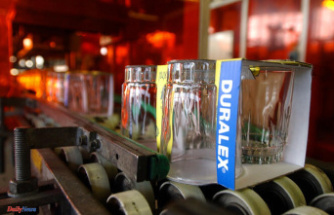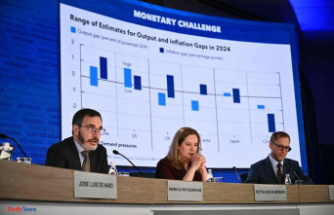Although inflation is very high, there may be some relief.
NEW YORK (AP), Inflation is very high but not as severe as you might think.
The consumer prices increased 6.8% in the 12 months ended November, which is a 39-year record. Economists predict that inflation will remain at this level for several months, but then slow down through 2022. This is due to a number of factors. They don't expect inflation to return to the levels of the 1970s and early 1980s when it was above 10% for terrifyingly long periods.
Some areas could see relief within weeks for some households. Global markets have seen prices drop for crude oil and natural gases, which has led to lower home heating and pump prices. This should help to keep inflation in check even if other prices continue rising in the economy.
Economists believe inflation will remain higher than it was prior to the pandemic. This is even if it decreases through 2022. Inflation has been below 2% more often than in the past 10 years. It even fell below zero at times during 2015 and 2016. Too-low inflation can also cause a weak economy. This was the bigger threat.
Nela Richardson (ADP's chief economist) stated that "this is not going to work." "Just because inflation is going to moderate eventually doesn't mean prices will go down. They're up. They are up. He expects that the inflation rate will fall to 4% by the summer, and to be below 3% by year's end, but it will remain above 2% until 2023.
He said that improving supply chains is one reason for moderation. They were entangled after the sudden rebirth of the global economy following its brief shut down. Economists believe that increasing supply will ease inflation.
Price stated that it was not in anyone's best interests for the supply chain to be as disruptive as it is.
There's also the Federal Reserve. Wall Street expects that the Fed will announce this week that it will accelerate the end of its monthly bond-buying program to support the economy. This would allow it to raise short-term rates.
Low rates and bond buying are both intended to encourage borrowing. This allows people and businesses to purchase more goods. This can drive inflation higher as the demand exceeds supply.
In 2022, the U.S. government may offer less assistance to households through child tax credit payments and increased unemployment benefits. This could lead to Americans purchasing less, which will further reduce inflation pressure.
Americans should immediately see a rise in energy prices and inflation.
According to AAA, a gallon of regular gasoline dropped 2.4% in the past month to $3.35 per gallon. Although this is a significant improvement, drivers still pay much higher prices than last years, when a gallon regular gasoline cost $2.16.
According to the U.S. Energy Information Administration, gasoline prices will fall to $3.13 per month in December and $2.88 by 2022. This is after the average price of $3.39 per month since 2014.
"This should offer some relief to consumers when they fill up their tanks. How much relief? It's hard to know," Andrew Gross, spokesperson for AAA. "It is really difficult to determine what kind of world events are taking place. It doesn't take much for oil prices to rise."
There are many reasons why oil prices have fallen. One side is that oil supply has been increased by nations. The coronavirus omicron has lowered expectations of demand due to concerns that it could cause lockdowns or cancellations of travel. Since November began, the benchmark U.S. crude oil price has dropped nearly 15%.
Heating costs at home will likely fall, but bills will likely still be higher than last year due to lower natural gas prices and other fuels on global market.
According to Mark Wolfe (executive director of the National Energy Assistance Directors Association), heating a home in winter will cost an average $972. This is less than the $1056 that his group projected in October, but still more than the $888 homeowners paid to heat their homes last winter.
Wolfe stated, "This is a situation where consumers should be cautious." "Don't be fooled by the idea that prices will drop to last year's levels.
The biggest unknown in the direction of inflation is what happens to workers' wages.
All across the country, workers are fighting for better pay. Employees at Deere & Co. recently secured a deal that will give them 10% increases immediately.
Companies will often try to pass these increases on to customers by raising prices. With the unemployment rate at a low level and companies looking for workers, there were almost 1.5 job openings for every person with unemployment at the end October. This could be a sign that wage increases are on the horizon.
A further concern is whether the inflation spike seen already will cause Americans to be more cautious about buying in order to avoid any future price increases. This could lead to a feedback loop that drives prices higher.
Richardson, ADP's spokesperson said that there was a "real awareness" on Main Street about the fact that prices have risen.
"It is a concern because you have to fight inflation on multiple fronts -- not just supply chain shortages but also labor market shortages. Now you have the consumer, which only increases the difficulty of bringing down inflation."












